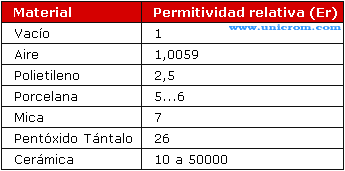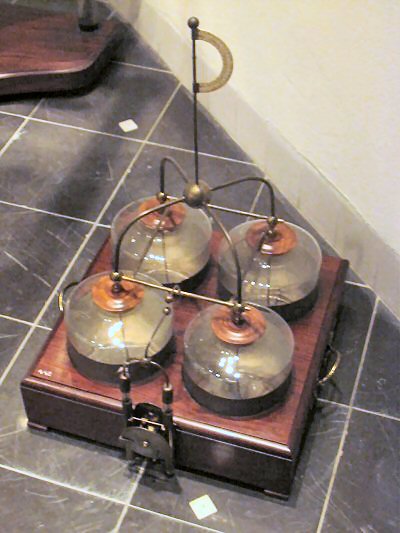Adrián Álvarez Gallardo Ángel Barrios Montero
INDEX
- What is a capacitor?
- Dielectric insulator
- History
- Theory of operation
- Hydraulic analogy
CAPACITOR
WHAT IS A CAPACITOR
A capacitor (originally known as a condenser) is a passive two-terminal electrical component used to store energy electrostatically in an electric field.The forms of practical capacitors vary widely, but all contain at least two electrical conductors (plates) separated by a dielectric (insulator).
DIELECTRIC INSULATOR
A dielectric or insulator is a material that prevents the passage of current, and its function is to increase the capacitance of the capacitor.
The different materials used as dielectric permittivity has varying degrees of (different capacity for establishing an electric field).

Relative permittivity of insulating materials - Electronics Area
The higher the permittivity, the greater the capacity of capacitor.
The capacitance of a capacitor is given by the formula:
Er = C x A / d
where:
- C = capacity
- Er = permittivity
- A = area between plates
- D = distance between the plates
The unit of measurement is the farad. There submultiples as miliFaradio (mF), microfarad (uF), the nanofarad (nF) and picoFarad (pF)
The main electrical characteristics of a capacitor are capacity or capacitance between plates maximum voltage (maximum voltage that is able to withstand without damage).
HISTORY
 In October 1745, Ewald Georg von Kleist of Pomerania, Germany, found that charge could be stored by connecting a high-voltage electrostatic generator by a wire to a volume of water in a hand-held glass jar. Von Kleist's hand and the water acted as conductors, and the jar as a dielectric
(although details of the mechanism were incorrectly identified at the
time). Von Kleist found that touching the wire resulted in a powerful
spark, much more painful than that obtained from an electrostatic
machine. The following year, the Dutch physicist Pieter van Musschenbroek invented a similar capacitor, which was named the Leyden jar, after the University of Leiden where he worked.
In October 1745, Ewald Georg von Kleist of Pomerania, Germany, found that charge could be stored by connecting a high-voltage electrostatic generator by a wire to a volume of water in a hand-held glass jar. Von Kleist's hand and the water acted as conductors, and the jar as a dielectric
(although details of the mechanism were incorrectly identified at the
time). Von Kleist found that touching the wire resulted in a powerful
spark, much more painful than that obtained from an electrostatic
machine. The following year, the Dutch physicist Pieter van Musschenbroek invented a similar capacitor, which was named the Leyden jar, after the University of Leiden where he worked.THEORY OF OPERATION
A capacitor consists of two conductors separated by a non-conductive region. The non-conductive region is called the dielectric. In simpler terms, the dielectric is just an electrical insulator.

HYDRAULIC ANALOGY
In the hydraulic analogy, charge carriers flowing through a wire are analogous to water flowing through a pipe. A capacitor is like a rubber membrane sealed inside a pipe. Water molecules cannot pass through the membrane, but some water can move by stretching the membrane.


Very interesting, (maybe too complex?) I hope you understood it well.
ReplyDelete